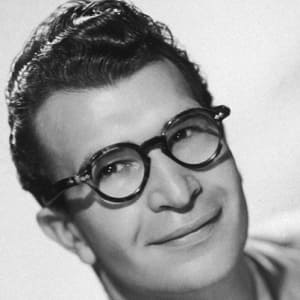
Eduardo Paolozzi
Sculptor Eduardo Paolozzi’s collage work combining surrealism with elements of popular culture and technology led him to be credited as the inventor of Pop Art.
Synopsis
Eduardo Paolozzi was born on March 7, 1924, in Edinburgh, Scotland. In the 1940s and '50s, he made sculptures and collages that combined surrealism with pop culture and modern machinery. In the 1960s, he further incorporated machinery into his art. He spent the 1970s working on abstract art reliefs. Through the 1980s and '90s, he took public commissions. He died on April 22, 2005, in London, England.
Early Life
Eduardo Luigi Paolozzi was born on March 7, 1924, in Edinburgh, Scotland, an only child of parents of Italian descent. In 1943, Paolozzi enrolled at the Edinburgh College of Art, with the intention of becoming a commercial artist. After a brief stint in the Royal Pioneer Corps, he transferred to London's St. Martin's School of Art in 1944. By the following year, he had changed his career path and begun studying sculpture at the Slade School of Fine Art. Paolozzi completed his course load there in 1947.
Surrealism and Collage
In the late 1940s, Paolozzi spent time in Paris, France, shadowing such surrealist artists as Jean Dubuffet and Alberto Giacometti. During this time, Paolozzi started making sculptures and collages that uniquely combined the influences of surrealism with elements of popular culture and contemporary machinery. A collection of Paolozzi's collages, comprised of clippings he pulled from magazines American soldiers had given him in Paris, were later displayed in a slideshow at the Institute of Contemporary Arts in 1952. To many, the slideshow designated Paolozzi as the "inventor of Pop Art."
Teaching and the Human Form
In 1949, Paolozzi started teaching at the London's Central School of Art and Design. He retained the position until 1955, after which he displayed his bronze cast sculptures in the "This is Tomorrow" exhibit at the White Chapel Art Gallery. During this period, Paolozzi's primary focus was the suffering human form.
Throughout his career as an artist, Paolozzi would teach at a number of art institutions, including his alma mater, St. Martin's School of Art.
Industrial Art
In the 1960s, Paolozzi further incorporated the theme of modern machinery into his art, through collaboration with industry engineering companies—which provided him with materials, equipment and workspace. Aluminum became Paolozzi's new material of choice, as he littered his work with discarded machine parts. Fused together through drilling, bolting and welding, the sum total of the parts produced ground-breaking artwork with sharp geometric edges that still managed to be suggestive of the human form. Through his industrial art, Paolozzi made a social statement about man's role in the age of technology.
Abstract Relief
Paolozzi spent much of the 1970s working on abstract art, including screen printing and reliefs. His color schemes were largely monochromatic during this time—a major departure from his previous, colorful work. One formidable product of this stage in Paolozzi's career was a commission of panels for the ceiling of Cleish Castle in Kinross-shire, Scotland.
Public Commissions
Through the 1980s and '90s, Paolozzi continued to accept public commissions. Among his best-known commissioned work is a 10-foot bronze statue of Sir Isaac Newton. Based on poet William Blake's allegorical depiction of Newton, the statue was sculpted for the piazza of the British Library.
Death
After a long period of illness following a stroke in 2001, Eduardo Paolozzi died on April 22, 2005, in London, England. He was survived by his three daughters—Louise, Anna and Emma—from his former marriage to Freda Elliot.




